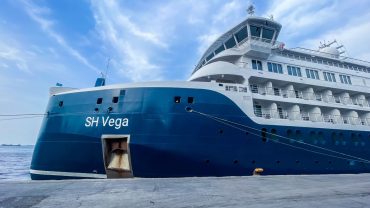This reserve is probably the westernmost remnant of West African rain forest. Its fauna and flora are rich and are more affected by seasonal changes than those of the lowland forests in the east. Its situation close to Freetown presents particular threats, but also great opportunities for education and ecotourism.
Location of Western Area Peninsula Forest
This forest reserve is located on the hills of the Western Area Peninsula, on the extreme western edge of the country, about 5 km south of the capital Freetown. The WAPF occupies a narrow chain of hills approximately 37 km long and 14 km wide, with a range of peaks, the highest being Picket Hill in the south, which rises to about 900m. A thin coastal strip lines the peninsula to the north, west and south. Freetown [population 600,000 (1989), but now probably in excess of 1.5 million occupies the northern end and numerous small settlements are found along the roads leading from the capital towards the reserve.
Guma Dam
The area forms the only remnant of moist closed forest remaining in western Sierra Leone (and probably the westernmost in the Upper Guinea forest block). Between 150 m and 900 m the hills are covered by moist forest, whilst along the coastal strip, the forest vegetation is interrupted by laterite plains covered by natural grassland. The relief is generally fairly steep and the hills are drained by a number of rocky permanent or seasonally flowing streams. The reserve supports two major reservoirs (the Guma Valley and Congo dams) that supply water to Freetown and other communities around the peninsula. Annual rainfall ranges from 3000-7000 mm. Mean daily temperatures vary from 25-30 0C in the dry season and 22-27 0C in the rainy season. Relative humidity at 1500h varies between 45% and 80% annually.
Birds
G.D. Field carried out work in the 1960s and early 1970s and recorded 316 species of birds (Field, 1973). Ausden and Wood (1990) recorded 186 species over a period of three months. A total of 374 species including occasional vagrants and migrants that visit water bodies within the forest, have so far been recorded. Two threatened species -White-necked Rockfowl (Vu) and Green-tailed Bristlebill (Vu) – and three near-threatened species occur. A population survey of the White-necked Rockfowl carried out in 1992, as part of a detailed study of the ecology and breeding biology of this species discovered four active colonies containing eight nesting sites (Thompson 1993; Thompson 1997).
Mammals and other fauna
Over 50 species of mammals have been recorded, of which seven species are primates, five of which are threatened – Western chimpanzee (En), Red Colobus monkey (Vu), Black-and-White Colobus Monkey, Sooty Mangabey (NT) and Diana monkey (Vu). Other threatened mammals include Leopard (Vu), Jentink’s Duiker (Vu), Black Duiker (NT) and Maxwell Duiker (NT). An endemic toad Cardioglosus aureolli occurs.
Access and Facilities
The reserve is within 5 km of the centre of the capital Freetown. A motorable road runs right around the reserve, with a number of feeder roads and a few trails within reserve zones. Hotels and beach bars are found on extensive scenic beaches around the coastal areas of the peninsular.
Road round peninsula
The Guma Trail, starting from the Guma dam, is the most frequently used by visitors and provides some opportunities for birding and wildlife. Yawri Bay on the southern coast and Sierra Leone River estuary on the northern coast, are within 40km and 10km respectively.
Information provided courtesy of the Conservation Society of Sierra Leone




Comment (0)